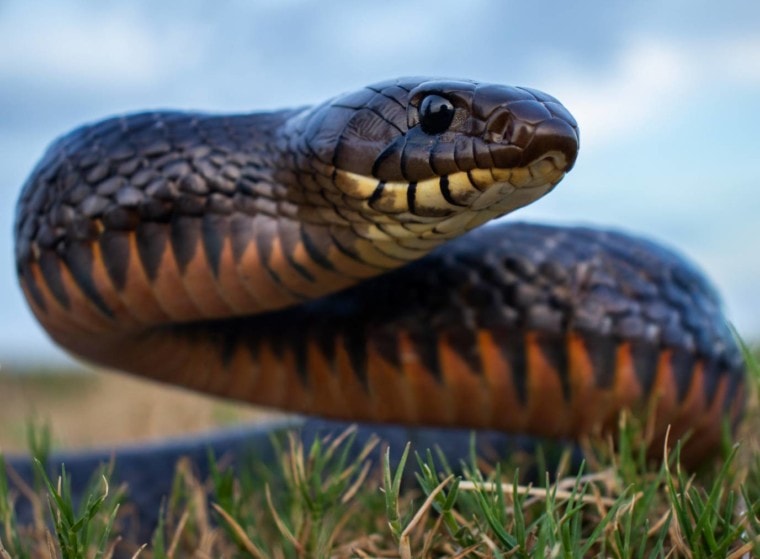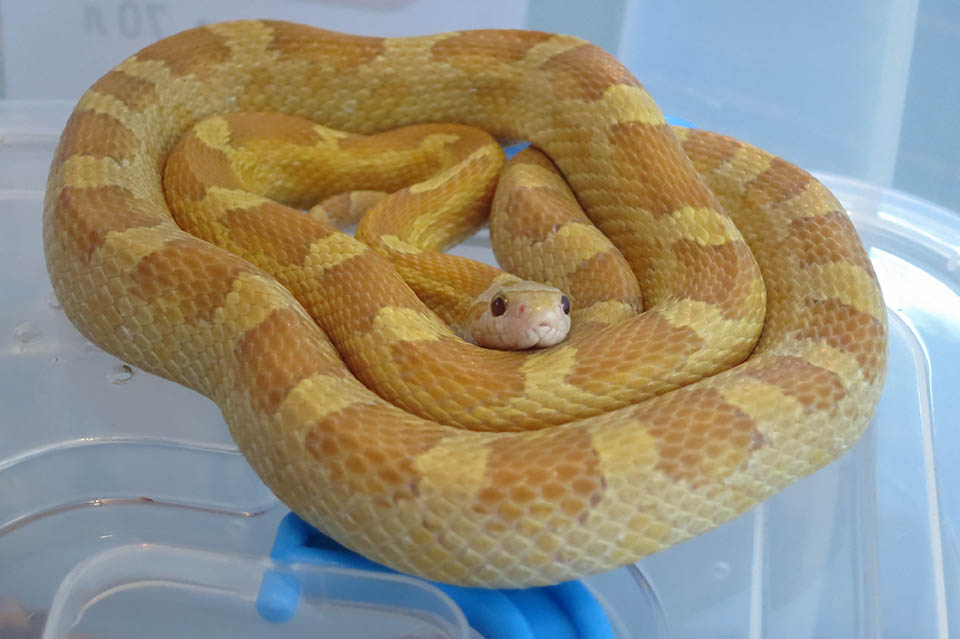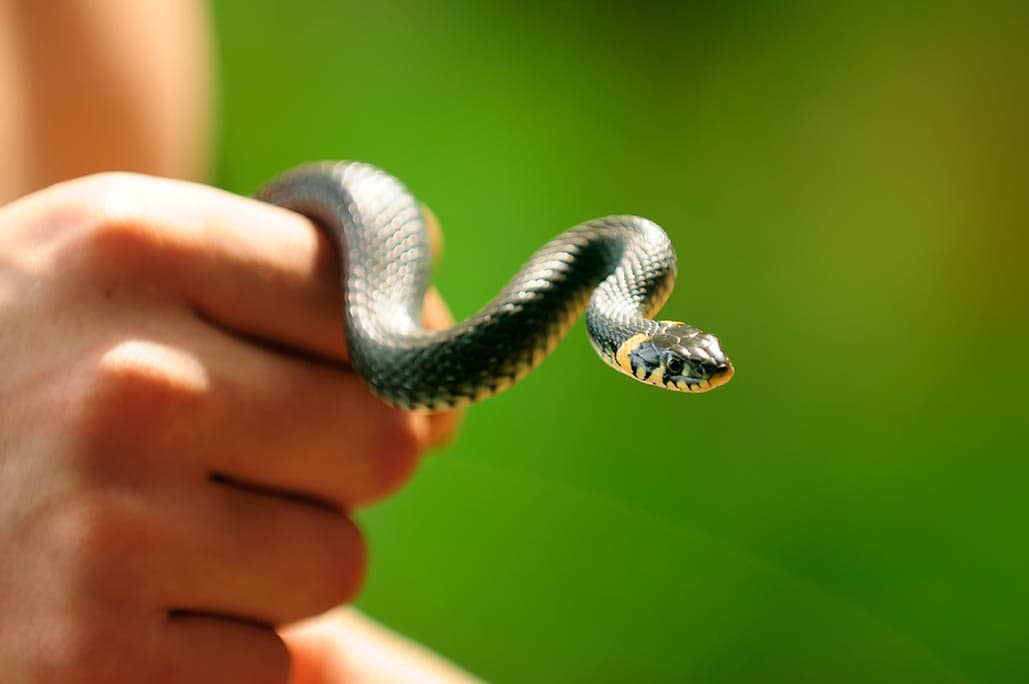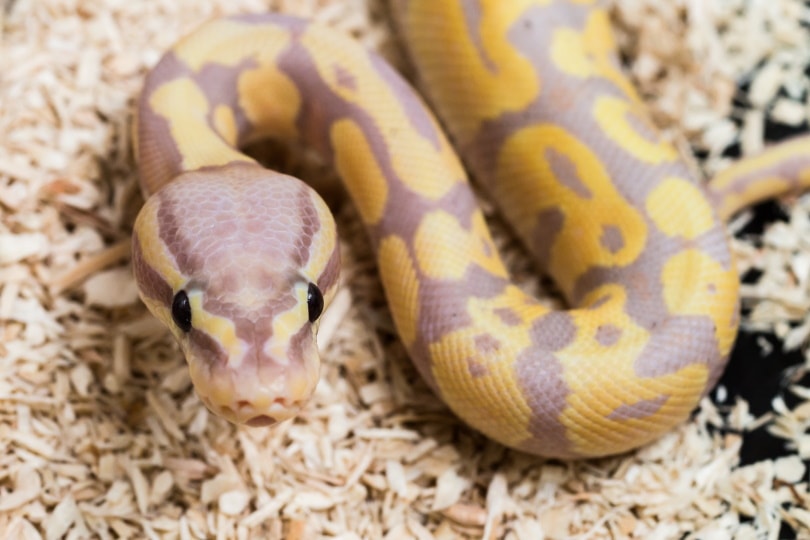
If you’re looking for an attractive, impressive, and active snake, the black-tailed cribo might be exactly what you’re looking for. These gentle giants are growing in popularity and price by the day.
But why are they so popular, and should you add one to your collection? We broke down everything that you need to know to care for one of these impressive reptiles here.
Quick Facts About Black Tailed Cribo
| Species Name: | Drymarchon melanurus |
| Common Name: | Black-tailed cribo, middle American indigo snake |
| Care Level: | Beginner |
| Lifespan: | 20 to 30 years |
| Adult Size: | 6 to 8 feet |
| Diet: | Mice, small mammals, amphibians, or reptiles |
| Minimum Tank Size: | 180-gallons — 6’ x 2’ x 2’ |
| Temperature & Humidity: | 85- to 90-degree-Fahrenheit basking area, 75–80-degree-Fahrenheit cool area, and 70% humidity |
Do Black Tailed Cribos Make Good Pets?
If you’re looking for a snake that does more than bask in the corner and eat, then the black-tailed cribo might be precisely what you’ve been looking for.
They’re incredibly active snakes, but they rarely bite, making them a popular choice for novice snake handlers. Just keep in mind that since they’re so active, they need much larger terrariums than other snakes, which can be cost-prohibitive.
But if you have the space, they’re an excellent choice for anyone who wants a pet snake.
Appearance
A black-tailed cribo has a basic appearance compared to many other snake morphs. They have a tan body throughout with a jet-black tail. However, there are plenty of color mixes that don’t have a full jet-black tail.
The more that you’re willing to spend, the more likely you will get a black-tailed cribo with less brown mixed in the tail.
How to Take Care of Black-Tailed Cribo
Tank
The most expensive part of caring for a black-tailed cribo is getting a large enough enclosure. They’re active snakes that need plenty of space to move around, and since they can grow anywhere from 6 to 8 feet, this means they need tons of space.
Shoot for an enclosure that’s at least 180 gallons in size and at least 6 feet long, 2 feet wide, and 2 feet high. Spot-clean the tank at least once a week, and thoroughly clean everything at least once a month.
Lighting
You need to try and mimic their natural lighting schedule as much as possible, which means at least 12 hours of light each day. A UVB light is always beneficial and recommended, although it isn’t required.
Heating (Temperature & Humidity)
Like all cold-blooded animals, a black-tailed cribo can’t regulate their own body temperature. This is why you need a basking area between 85 and 90 degrees fahrenheit. Use a heat lamp and not a heating pad or heated rock, as these can cook your animals from the inside out.
Substrate
There’s a great deal of debate about what the best substrate is for these snakes. While newspaper is the easiest to keep clean, most owners prefer to mimic their natural substrate at much as possible.
This is why we recommend using peat moss. It mimics their natural substrate well and does a great job of retaining humidity. It requires a bit more work to keep clean, but it will keep your black-tailed cribo happier and healthier.
Tank Recommendations
| Tank Type: | 180-gallon tank — 6’ x 2’ x 2’ |
| Lighting: | UVB light (optional) |
| Heating: | 85- to 90-degree-Fahrenheit basking area, 75- to 80-degree-Fahrenheit area, and 70% humidity |
| Best Substrate: | Peat moss |
Feeding Your Black-Tailed Cribo
While in the wild, a black-tailed cribo can eat a wide array of reptiles, amphibians, and mammals, in captivity, your snake can thrive off a diet of nothing but mice and rats.
Always feed your black-tailed cribo with feeding tongs, and only feed them thawed or frozen mice or rats because live animals can injure or even kill your snake.
Keep in mind that the black-tailed cribo has an aggressive feeding instinct. It’s not uncommon for them to try to lunge out of their enclosure at feeding time.
Keep meals small, feed your black-tailed cribo about once every 5 days, and avoid handling them for at least a day after feeding.
Diet Summary
| Mice/rats | 100% of diet |
 Keeping Your Black-Tailed Cribo Healthy
Keeping Your Black-Tailed Cribo Healthy
The black-tailed cribo is an extremely hardy animal, which means that if you keep up with their enclosure, you’re unlikely to have any problems with their health.
Don’t overfeed them and do give them a clean enclosure, and your black-tailed cribo should live for 20 to 30 years without any problems.
That said, we highlighted a few potential concerns here. If you notice that your black-tailed cribo is experiencing any of these problems, you need to take them to a vet who specializes in exotic animals as soon as possible.
Common Health Issues
Lifespan
When properly cared for, a black-tailed cribo should live anywhere from 20 to 30 years in captivity. Due to their longer lifespan, ensure that you’re ready for a long-term commitment before purchasing one.
While caring for one is relatively easy, it can be hard to find pet sitters or new owners for exotic animals.
Breeding
While caring for a black-tailed cribo is relatively easy, breeding them requires a bit more work. You should try to breed your black-tailed cribo in both spring and fall, but only after you’ve slowly dropped the temperature a bit and your snake has lost interest in feeding.
You’ll still need to keep an eye on males, as they can get aggressive around females and injure or even kill them during the mating process.
You will want to have the snakes copulate multiple times throughout the season to maximize the chance of success.
After breeding, you’ll need to incubate the eggs and keep each snake away from each other after they hatch.
Are Black-Tailed Cribos Friendly? Our Handling Advice
The black-tailed cribo is an extremely friendly snake that is great for novice handlers. However, the most important thing that you need to do is wash your hands both before and after handling them.
If your black-tailed cribo smells food, they have an extremely aggressive feeding response, and this can lead to nips and bites. But as long as your black-tailed cribo isn’t expecting food, they are docile and easy to handle.
This is why you need to feed them with feeding tongs, and we recommend using a separate feeding enclosure.
Shedding & Brumation: What to Expect
Like most snakes, when your black-tailed cribo is getting ready to shed, they’ll stop eating for a few days in preparation. They should shed their entire skin at once, so if it comes off in patches, you need to increase the humidity level.
For brumation, you should drop the tank’s temperature a few degrees at a time for the winter months and bring it back up in the spring the same way.
During brumation, expect your black-tailed cribo to be a little more lethargic and not eat as much. This is completely normal, and their appetite should go back to normal after they come out of brumation.
How Much Do Black Tailed Cribos Cost?
While the black-tailed cribo might not cost as much as some of the other larger snakes out there, the price is on the rise. Currently, you can expect to spend anywhere from $400 to $600 on a single snake.
Once you factor in their larger enclosure, this quickly becomes an expensive snake to add to your collection.
Care Guide Summary
 Summary
Summary
While it’s not hard to see why these impressive snakes are so popular, ensure that you have a large enough enclosure to care for them before you purchase one.
While they start small, they quickly grow up to 8 feet, and the last thing that you want is a snake that you can’t afford to house. But if you have everything that you need to care for them, they make a great addition and a great pet!
Featured Image Credit: Radiant Reptilia, Shutterstock







